A couple of posts ago I reported getting rid of almost all the Nikon 810 low-frequency dark-field noise by averaging many (256) dark-field images and subtracting the average from individual images.
I wondered if the same trick would work with the Sony alpha 7S. Sadly, the answer is no.
Here’s the standard deviation of the average of 7S dark-field images as they are added into the mix one by one:
First with the raw values as the vertical axis:
And with the vertical axis converted to electrons:
Either way, it doesn’t look very promising. The curves are almost straight lines on the log-log plot, with vertical values halving every time the horizontal values are quadrupled, indicating that almost all the dark-field noise is different from exposure to exposure.
I tried testing at ISO 3200:
That’s a little more promising. If we look at the histogram of the average of 256 exposures, we can see what’s going on:
There are two Gaussian distributions, one narrow one (It’s only narrow because it’s the average of 256 exposures) and one wider one with slightly lower mean and much lower population. The latter one is the fixed error.
But subtracting our the averaged image makes little difference to the low-frequency energy:
Without subtraction:
With subtraction:
You win some, you lose some…
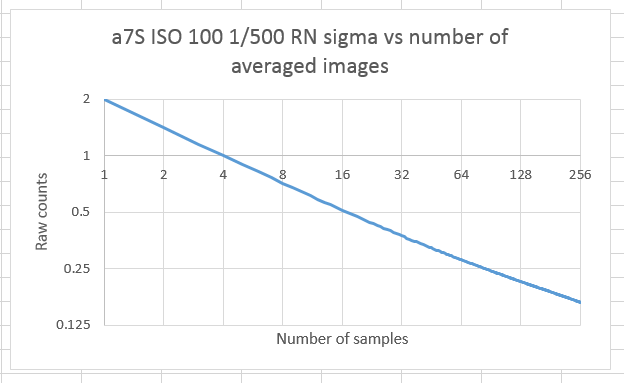
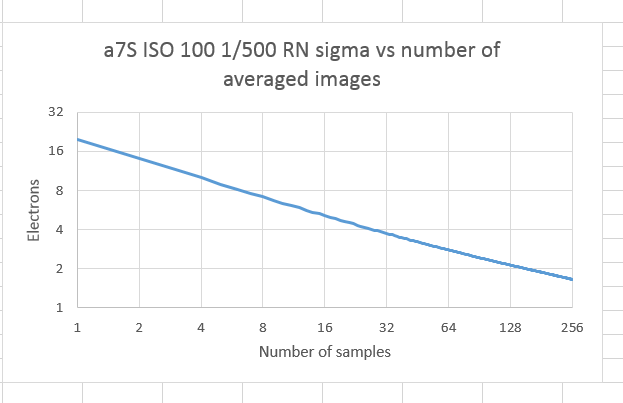
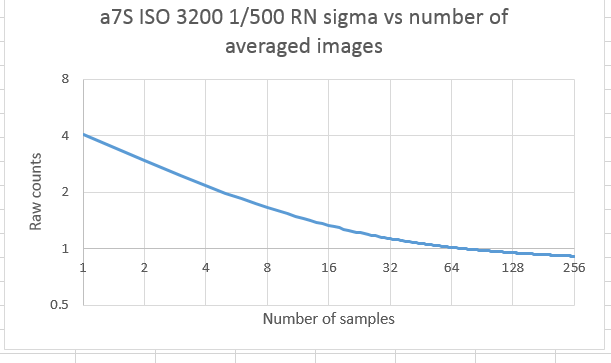
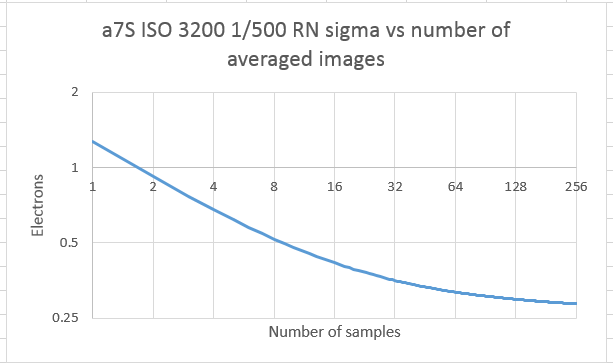
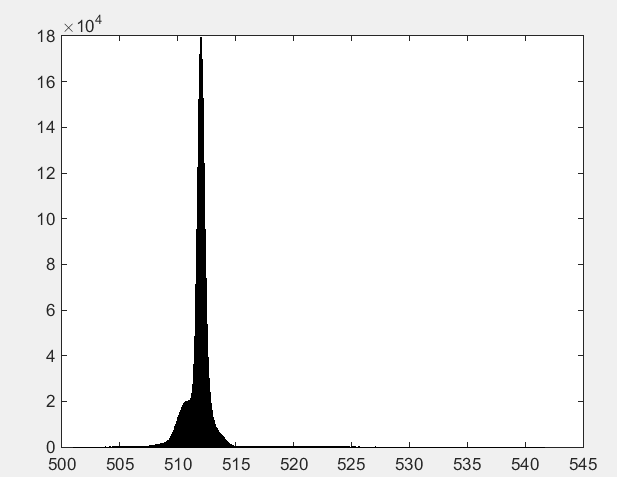
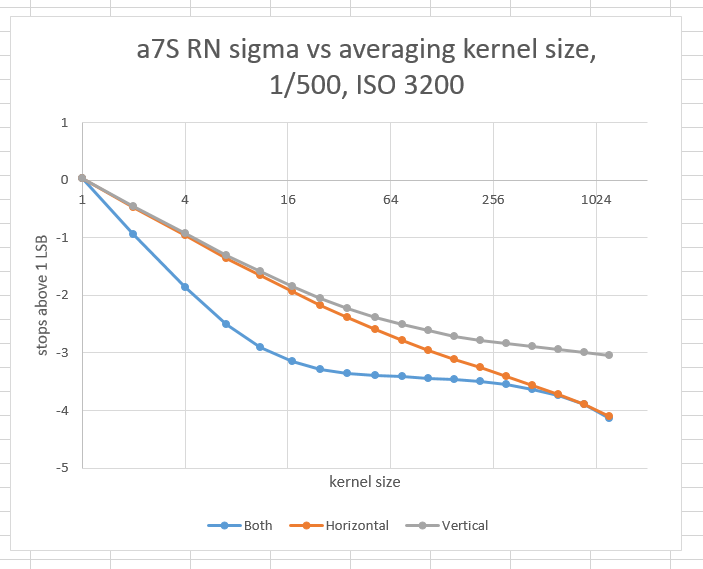
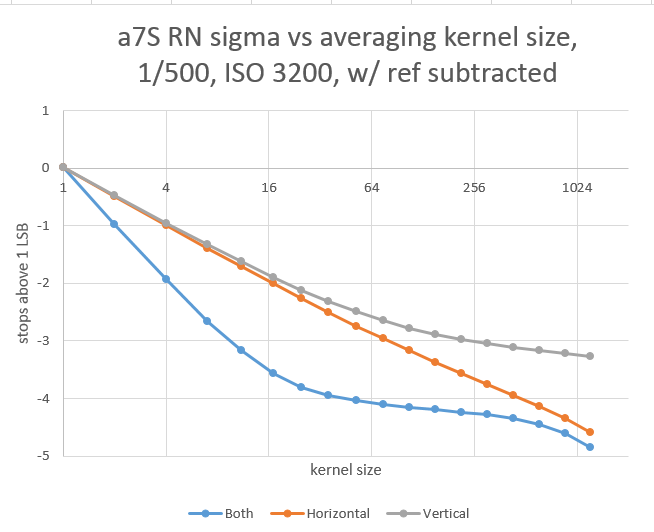
May be Sony already did that trick in their RAW files?
If they did any spatial filtering, it would show up in dark-field Fourier analysis. When I do that analysis, I don’t see any evidence of spatial filtering until above ISO 50K.
Jim